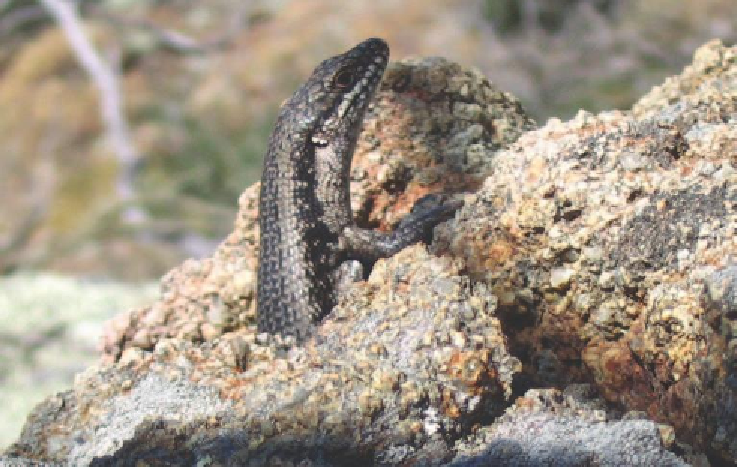Biology Reference
In-Depth Information
Figure 5.10:
Crevice skink in crevice. (Photo by Damian Michael)
Outcrop condition
Disturbances which affect the habitat value of a rocky outcrop include: (1)
logging;
(2)
overgrazing by domestic livestock, rabbits and hares; (3) weed invasion; and (4)
excessive quantities of soil nutrients. The type of disturbance regime varies
depending on where an outcrop is located in the landscape. Outcrops in grazing
landscapes are less degraded than outcrops in cropping landscapes. Understanding
how wildlife responds to different kinds of disturbance is an important part of
developing appropriate management strategies for outcrops. For example, reptile
populations can be influenced by the amount of exotic grass cover on an outcrop
(Figure 5.11). This is because critical habitat such as bare ground and basking sites
are eliminated when exotic grasses colonise an outcrop.
Dense regrowth vegetation also can reduce reptile numbers on rocky outcrops
(Figure 5.11). This is because reptile basking sites are
shaded by a dense tree canopy. Grazing pressure also
can reduce native ground cover and increase
unpalatable weeds which contribute to the shading of
surface rocks. Sheep dung also can accumulate beneath
rocks and make them unsuitable shelter sites for
reptiles and invertebrates. High-intensity grazing,
particularly set-stock grazing, can have a significant
negative effect on reptiles.
5
Vegetation condition is
one of the key factors
influencing rocky outcrops.
Careful management can
significantly improve outcrop
condition for reptiles as well
as other groups, including
native plants

